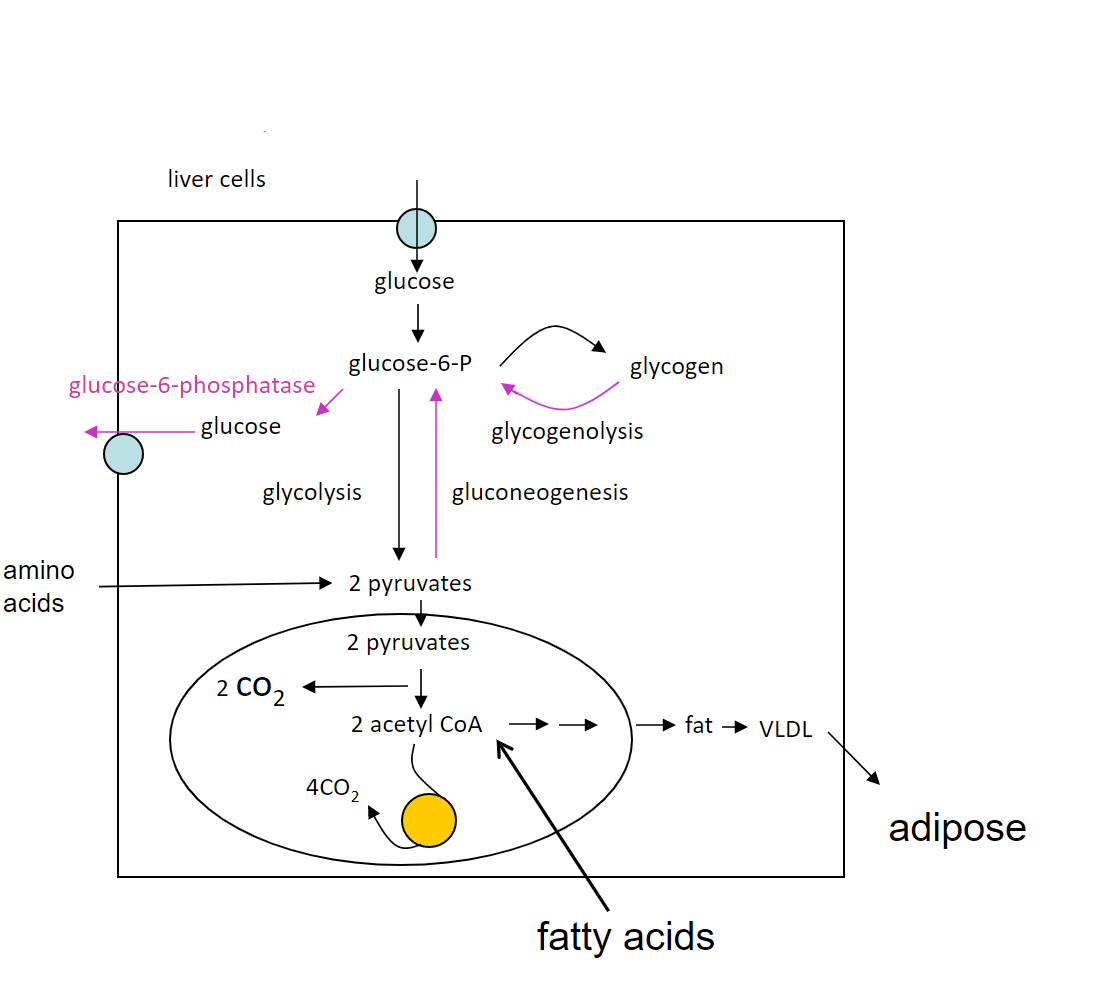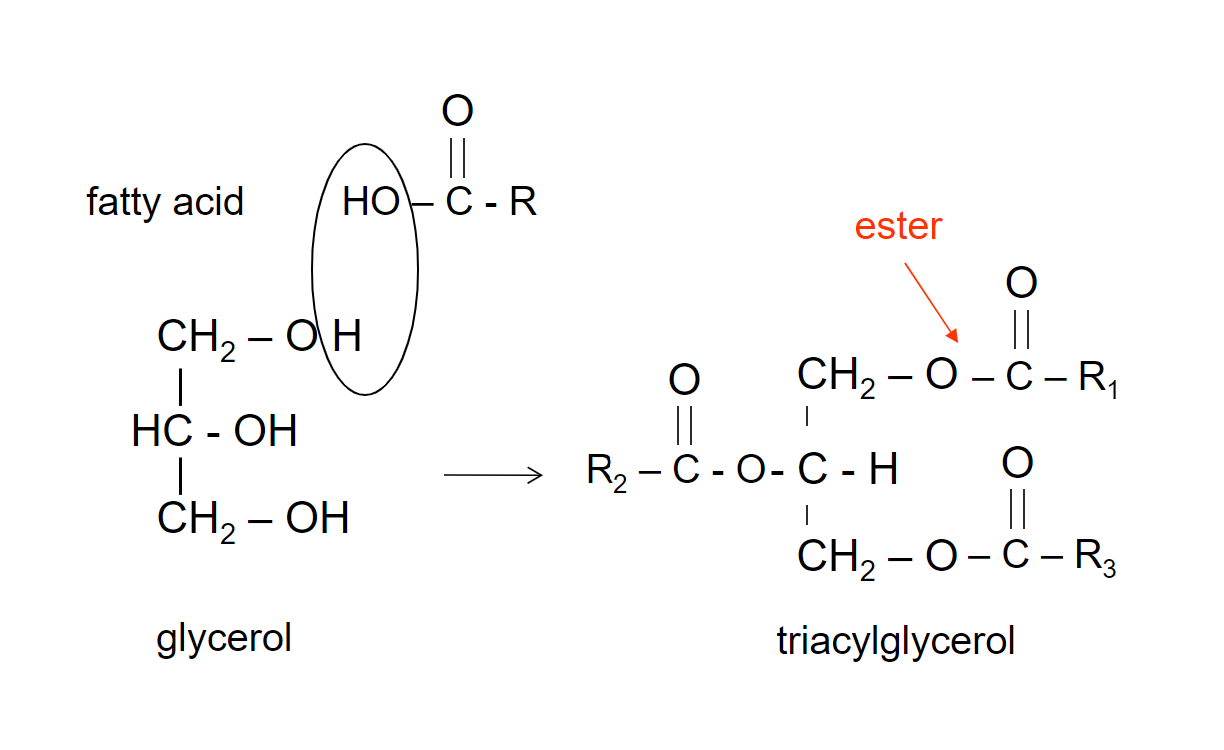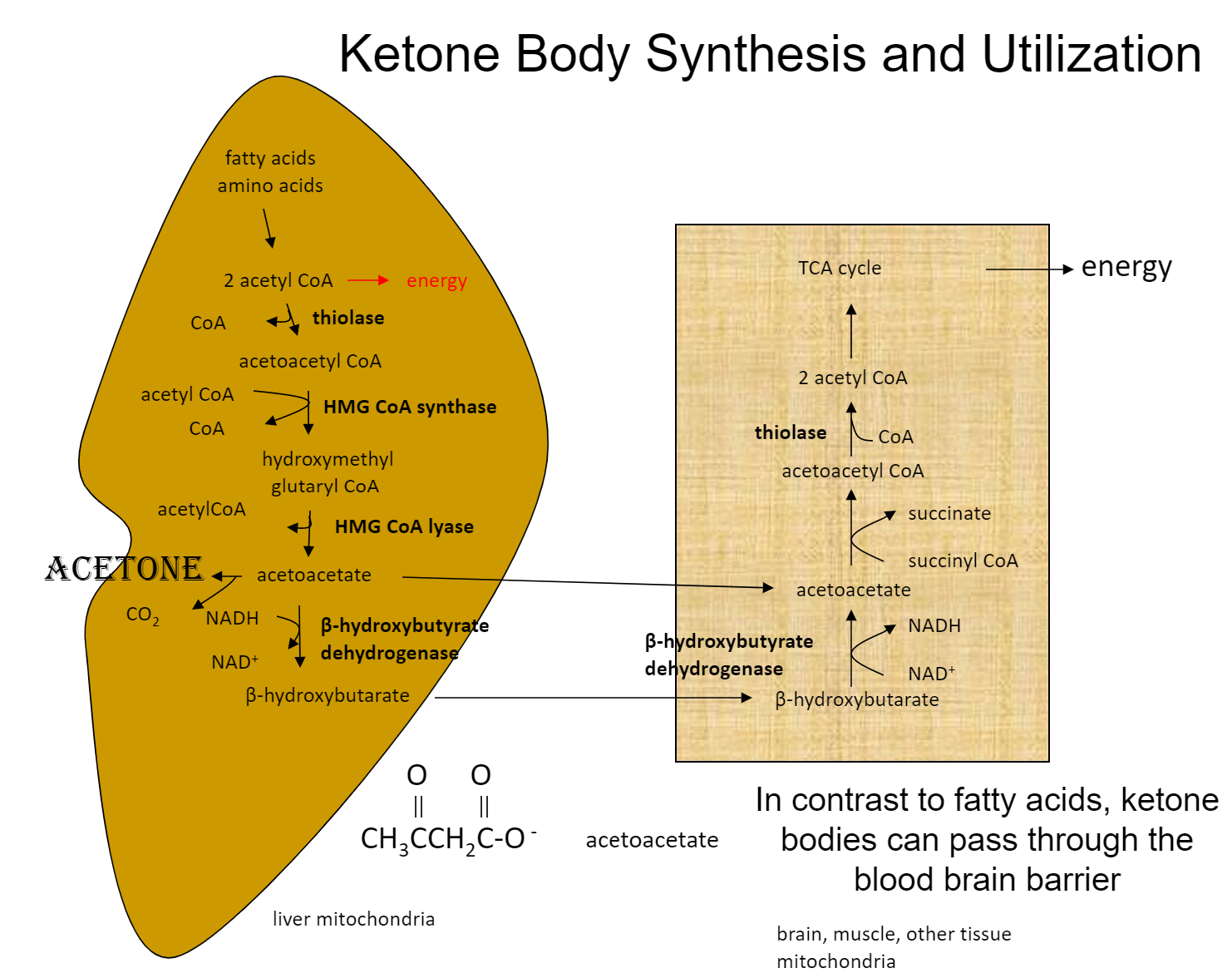
Nutrition/Metabolism Part 2
Energy Expenditure
basal metabolism- involuntary processes required for life
makes up 60-75% of energy expenditure
includes breathing, circulation, regulating body temperature, making tissues, waste removal, nerve signals
basal metabolic rate (BMR)- rate of energy expenditure under energy conditions
influenced by weight, gender, age, exercise, hormones, fasting
lean body mass (muscle) has a higher BMR than fat body mass
as you age, lean body mass decreases → so BMR decreases too
men tend to have higher BMR than women because they generally have more lean body mass
total energy expenditure = BMR + energy used in digestion/absorption + activity level
Energy Balance
energy balance- when energy consumption equals energy expenditure
results in weight maintenance
negative energy balance- when energy intake is less than energy expenditure
results in weight loss
positive energy balance- when energy intake is more than energy expenditure
results in weight gain
Protein Metabolism
Protein is an essential nutrient
Proteins are made of 20 different amino acids
There are 9 essential amino acids that cannot be made by the body and must be obtained from the diet
When we eat protein, that gets broken down into amino acids that circulate in the bloodstream.
The amino acids then go inside cells to synthesize our own proteins
The proteins we synthesize can last for varying amounts of time
proteins like hemoglobin or collagen in the bones can last for a long time
regulatory proteins may only be around for a little while before they are degraded
the longevity of a protein can be expressed by its half-life- the amount of time it takes for 50% of the protein sample to be degraded
We can also use proteins to synthesize other nitrogen-containing compounds such as the nitrogenous bases of DNA
If our protein intake fulfills the needs of replenishing the amino acid pool and synthesizing nitrogen-containing compounds, the amino acids get broken down into ammonia and the carbon skeleton
ammonia is highly toxic and is made into urea in the liver and kidneys
urea is eliminated in the urine
the carbon skeletons get stored as fat in the fed state
in the fasting state, the carbon skeletons can be used in 2 ways
the carbon skeletons of ketogenic amino acids can be modified into a compound that directly is used in energy production
the carbon skeletons of glucogenic amino acids can be modified into glucose
Carbohydrates
2 main types- sugars (mono or disaccharides) and fiber (usually plant polysaccharides)
starch and glycogen are glucose polysaccharides
starch is a glucose polymer where the glucose molecules are joined together in α-1,4 glycosidic linkages (a bond between carbon 1 of one glucose molecule and carbon 4 of another glucose molecule where the OH on carbon 1 points below the ring)
**glycogen**is a glucose polymer where the glucose molecules are joined together in
α-1,4 linkages and α-1,6 glycosidic linkages (a bond between carbon 1 of one glucose molecule and carbon 6 of another glucose molecule where the OH on carbon 1 points below the ring)
cellulose is a glucose polymer where the glucose molecules are joined together in β−1,4glycosidiclinkages(a bond between carbon 1 of one glucose molecule and carbon 6 of another glucose molecule where the OH on carbon 1 points below the ring)
cellulose is indigestible in humans because we do not make an enzyme to digest β-1,4 glycosidic linkages
cellulose passes through the gut and gives bulk to stool
Fiber and Health
Fiber is important in the diet because it helps with
normalizing bowel movements
help maintain bowel health
lower risk of hemorrhoids/diverculitis
lower risk of colon cancer
soluble fiber (fiber that dissolves in water) lowers serum cholesterol
fiber can also reduce blood pressure and inflammation
whole grains control blood sugar levels better than refined carbohydrates
help control weight
more filling
help you eat less
longer duration of satiety
increased fiber intake also reduces risk of death from cardiovascular disease and certain cancers
Why does there need to be glucose in the blood?
Red Blood Cells
RBCs don’t do the krebs cycle or oxidative phosphorylation because their function is to transport oxygen, so they shouldn’t be using it
RBCs have no mitochondria
RBCs exclusively do anaerobic glycolysis
basic rundown of glycolysis
glucose gets phosphorylated to glucose-6-phosphate (G6P)
G6P gets broken down into 2 pyruvates
2 pyruvates are then made into 2 lactates so 2 H+ is released to continue glycolysis
This only nets 2 ATPs per glucose
Brain and Nervous Tissue
nervous tissue carries out all 3 steps of cellular respiration (glycolysis, Krebs/Citric acid/TCA cycle, and oxidative phosphorylation)
It is very dependent on glucose and cannot use fatty acids for energy
fatty acids do not cross the blood-brain barrier easily
during a prolonged fast, the brain can adapt to using ketone bodies for energy
Metabolism of Glucose
insulin is released when blood glucose levels increase → fed state
glucagon is released when blood glucose levels decrease → fasting state
fatty acids provide the energy for gluconeogenesis to occur but the carbons themselves come from amino acids

Fats
fats are stored in the body as triglycerides- a glycerol molecule with 3 fatty acid chains
the H in the carboxylic acid of the fatty acid and OH of the glycerol are removed to make a bond between glycerol and the fatty acid- ester linkage
this happens 3 times because glycerol has 3 alcohol groups

Lipid Metabolism (Fasted State)
hormone-sensitive lipase in adipose tissue gets activated by high glucagon & low insulin levels
lipase breaks triglycerides into 3 fatty acids and glycerol by hydrolysis
the fatty acids get bound to albumin to be released into the bloodstream
Ketone Body Synthesis & Utilization

acetoacetate and beta-hydroxybutyrate are called **ketonebodies**because they have ketone groups in them
acetoacetate can spontaneously break down into acetone
acetone gives off sweet smell in breath/sweat/urine → how HCPs know when pt is in ketoacidosis
Nutrition/Metabolism Part 2
Energy Expenditure
basal metabolism- involuntary processes required for life
makes up 60-75% of energy expenditure
includes breathing, circulation, regulating body temperature, making tissues, waste removal, nerve signals
basal metabolic rate (BMR)- rate of energy expenditure under energy conditions
influenced by weight, gender, age, exercise, hormones, fasting
lean body mass (muscle) has a higher BMR than fat body mass
as you age, lean body mass decreases → so BMR decreases too
men tend to have higher BMR than women because they generally have more lean body mass
total energy expenditure = BMR + energy used in digestion/absorption + activity level
Energy Balance
energy balance- when energy consumption equals energy expenditure
results in weight maintenance
negative energy balance- when energy intake is less than energy expenditure
results in weight loss
positive energy balance- when energy intake is more than energy expenditure
results in weight gain
Protein Metabolism
Protein is an essential nutrient
Proteins are made of 20 different amino acids
There are 9 essential amino acids that cannot be made by the body and must be obtained from the diet
When we eat protein, that gets broken down into amino acids that circulate in the bloodstream.
The amino acids then go inside cells to synthesize our own proteins
The proteins we synthesize can last for varying amounts of time
proteins like hemoglobin or collagen in the bones can last for a long time
regulatory proteins may only be around for a little while before they are degraded
the longevity of a protein can be expressed by its half-life- the amount of time it takes for 50% of the protein sample to be degraded
We can also use proteins to synthesize other nitrogen-containing compounds such as the nitrogenous bases of DNA
If our protein intake fulfills the needs of replenishing the amino acid pool and synthesizing nitrogen-containing compounds, the amino acids get broken down into ammonia and the carbon skeleton
ammonia is highly toxic and is made into urea in the liver and kidneys
urea is eliminated in the urine
the carbon skeletons get stored as fat in the fed state
in the fasting state, the carbon skeletons can be used in 2 ways
the carbon skeletons of ketogenic amino acids can be modified into a compound that directly is used in energy production
the carbon skeletons of glucogenic amino acids can be modified into glucose
Carbohydrates
2 main types- sugars (mono or disaccharides) and fiber (usually plant polysaccharides)
starch and glycogen are glucose polysaccharides
starch is a glucose polymer where the glucose molecules are joined together in α-1,4 glycosidic linkages (a bond between carbon 1 of one glucose molecule and carbon 4 of another glucose molecule where the OH on carbon 1 points below the ring)
**glycogen**is a glucose polymer where the glucose molecules are joined together in
α-1,4 linkages and α-1,6 glycosidic linkages (a bond between carbon 1 of one glucose molecule and carbon 6 of another glucose molecule where the OH on carbon 1 points below the ring)
cellulose is a glucose polymer where the glucose molecules are joined together in β−1,4glycosidiclinkages(a bond between carbon 1 of one glucose molecule and carbon 6 of another glucose molecule where the OH on carbon 1 points below the ring)
cellulose is indigestible in humans because we do not make an enzyme to digest β-1,4 glycosidic linkages
cellulose passes through the gut and gives bulk to stool
Fiber and Health
Fiber is important in the diet because it helps with
normalizing bowel movements
help maintain bowel health
lower risk of hemorrhoids/diverculitis
lower risk of colon cancer
soluble fiber (fiber that dissolves in water) lowers serum cholesterol
fiber can also reduce blood pressure and inflammation
whole grains control blood sugar levels better than refined carbohydrates
help control weight
more filling
help you eat less
longer duration of satiety
increased fiber intake also reduces risk of death from cardiovascular disease and certain cancers
Why does there need to be glucose in the blood?
Red Blood Cells
RBCs don’t do the krebs cycle or oxidative phosphorylation because their function is to transport oxygen, so they shouldn’t be using it
RBCs have no mitochondria
RBCs exclusively do anaerobic glycolysis
basic rundown of glycolysis
glucose gets phosphorylated to glucose-6-phosphate (G6P)
G6P gets broken down into 2 pyruvates
2 pyruvates are then made into 2 lactates so 2 H+ is released to continue glycolysis
This only nets 2 ATPs per glucose
Brain and Nervous Tissue
nervous tissue carries out all 3 steps of cellular respiration (glycolysis, Krebs/Citric acid/TCA cycle, and oxidative phosphorylation)
It is very dependent on glucose and cannot use fatty acids for energy
fatty acids do not cross the blood-brain barrier easily
during a prolonged fast, the brain can adapt to using ketone bodies for energy
Metabolism of Glucose
insulin is released when blood glucose levels increase → fed state
glucagon is released when blood glucose levels decrease → fasting state
fatty acids provide the energy for gluconeogenesis to occur but the carbons themselves come from amino acids

Fats
fats are stored in the body as triglycerides- a glycerol molecule with 3 fatty acid chains
the H in the carboxylic acid of the fatty acid and OH of the glycerol are removed to make a bond between glycerol and the fatty acid- ester linkage
this happens 3 times because glycerol has 3 alcohol groups

Lipid Metabolism (Fasted State)
hormone-sensitive lipase in adipose tissue gets activated by high glucagon & low insulin levels
lipase breaks triglycerides into 3 fatty acids and glycerol by hydrolysis
the fatty acids get bound to albumin to be released into the bloodstream
Ketone Body Synthesis & Utilization

acetoacetate and beta-hydroxybutyrate are called **ketonebodies**because they have ketone groups in them
acetoacetate can spontaneously break down into acetone
acetone gives off sweet smell in breath/sweat/urine → how HCPs know when pt is in ketoacidosis
 Knowt
Knowt
